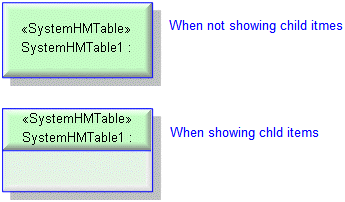System HM table (ARINC for PikeOS code)

A SystemHMTable is a container for other items specifying what states the system can be in, and what errors can occur in those states. For more information see the ARINC SPECIFICATION 653P1-2, December 1, 2005.
A System HM Table models the <SystemHMTable> element in an ARINC 653 configuration. The System HM Table's System State Entries, Error ID Actions and Error ID Levels define the content of the <SystemHMTable> element.
The structure of the <SystemHMTable> element is as follows for PikeOS:
<SystemHMTable>
<SystemStateErrorEntry SystemState="">
<ErrorIDLevelTable>
<ErrorIDLevel ErrorIdentifier="" ErrorLevel="" >
</ErrorIDLevel>
<ErrorIDActionTable>
<ErrorIDAction ErrorIdentifier="" Action="">
</ErrorIDAction>
</ErrorIDActionTable>
</SystemStateErrorEntry>
</SystemHMTable>
<SystemStateErrorEntry SystemState="">
<ErrorIDLevelTable>
<ErrorIDLevel ErrorIdentifier="" ErrorLevel="" >
</ErrorIDLevel>
<ErrorIDActionTable>
<ErrorIDAction ErrorIdentifier="" Action="">
</ErrorIDAction>
</ErrorIDActionTable>
</SystemStateErrorEntry>
</SystemHMTable>
The profile creates a System HM Table when you create an Integration Project through the New > Integration Project command. This System HM Table includes a populated child Configuration Diagram.
Tell me more...
In addition, you can create System HM Table on a
Configuration Diagram: click the 

When shown on a Configuration Diagram, a System HM Table's notation is as follows:

You can create a Configuration Diagram for a System HM Table: right-click the System HM Table, point to ARINC, point to New, and then click System HM Table Diagram. On a Configuration Diagram you can open a System HM Table's child Configuration Diagram by double-clicking the System HM Table.
You can view all the System HM Tables in the model through the SystemHMTable folder in the ARINC 653 Profile pane.
A System HM Table is based on a UML Attribute.
The following sections provide information about how a System HM Table is used in the model.
Shown on these diagrams
(Module or System HM Table owned)
ARINC properties
None.
